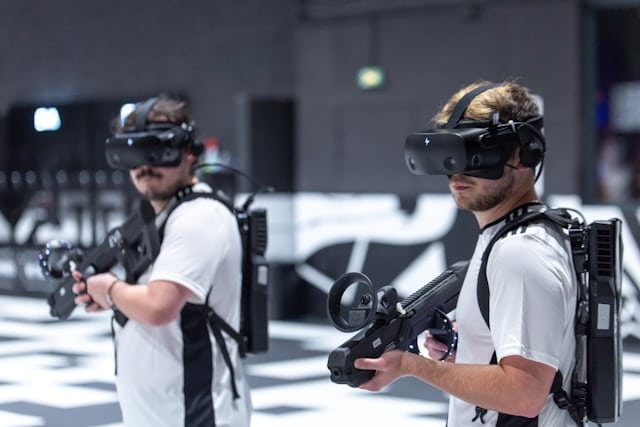How Are Virtual Reality Showrooms Influencing Car Sales in the UK?

In the modern era, the automotive industry is experiencing a ground-breaking transformation, courtesy of innovative technology. Particularly in the UK, the market is witnessing a significant shift from traditional ways of trading cars to more advanced techniques. One such revolutionary technology that has become a game-changer in the industry is virtual reality, popularly known as VR.
VR has allowed the transition of physical car showrooms into virtual ones, offering a unique, immersive experience to customers. It has revolutionised the way people buy vehicles, and has become an effective tool for driving sales in the market. Here we delve deeper into the subject, exploring how virtual reality showrooms are influencing the car sales in the UK.
Avez-vous vu cela : How Is AI Being Used to Enhance the Effectiveness of Solar Panel Installations?
Virtual Reality Showrooms: A New Era in the Automotive Industry
The advent of virtual reality in the automotive industry has brought about a paradigm shift in customers’ car buying experience. By simply wearing a VR headset, customers can explore the complete range of cars available, with the opportunity to inspect their interiors, exteriors, and various features, all within the comfort of their homes. The technology provides a realistic, 360-degree view of the vehicle, thus simulating a real showroom experience.
Virtual showrooms bridge the gap between the online and offline world, providing a seamless experience to customers. With this technology, car dealers are no longer bound to the physical constraints of a showroom, as they can present an unlimited number of car models and customisation options virtually.
A lire également : Can AI-Powered Genome Sequencing Offer New Insights into Rare Genetic Disorders?
Impact of VR on Car Sales
The influence of virtual reality showrooms on car sales is unequivocal. VR has altered the customer’s decision-making process, proving to be a powerful sales tool. Customers can virtually test drive a vehicle, experiencing the real feel of the car, which helps them make an informed decision about their purchase.
Studies have shown that customers are more likely to buy a car after experiencing it virtually. This immersive technology allows customers to visualise themselves owning the vehicle, thereby driving their intent to purchase. The virtual reality showrooms have also helped automotive dealers to boost their sales by attracting prospective customers with their innovative approach.
The Role of VR in Training and Customer Service
Apart from influencing sales, VR has also proven beneficial in enhancing the training of sales personnel and improving customer service in the automotive industry. Virtual reality training modules can simulate a variety of scenarios, helping sales personnel to perfect their skills and be prepared for any situation.
Also, the application of VR in customer service is noteworthy. It allows dealers to provide post-sales support remotely. For example, customers can use VR to understand how to operate specific features of the car or troubleshoot minor problems, thereby improving the overall customer experience.
Virtual Reality Showrooms: The Future
There’s no denying that virtual reality showrooms will play a pivotal role in shaping the future of the automotive industry. With advancements in technology, the VR experience is only set to become more realistic and immersive, leading to increased customer engagement.
Industry experts predict that in the near future, car dealers will leverage VR to offer customised experiences to their customers. For instance, customers could change the colour of the car, the upholstery, the wheels and even the ambient lighting in real-time, thus personalising the experience to their liking.
Conclusion
The impact of virtual reality showrooms on the UK’s car sales is significant, and it’s expected to grow exponentially in the coming years. With the various advantages it offers, from enhancing the customer buying experience to improving sales training and customer service, VR has undoubtedly become an integral part of the automotive industry. The future of car sales lies in this technology, and it will be exciting to see how it further transforms the industry.
Augmented Reality and Autonomous Vehicles: The Next Step
A parallel revolution to the virtual reality, which is also transforming the automotive industry, is the integration of augmented reality and autonomous vehicles. This combination is set to bring significant changes in the way customers perceive their car buying experience.
Augmented reality, unlike virtual reality, doesn’t replace the real world with a simulated one; instead, it enriches the real world with additional information and imagery. When combined with autonomous vehicles, it enhances the user experience by adding a new layer of interaction.
For instance, a potential buyer can visualise how the autonomous functions of the car work in real-time using augmented reality. They can witness how the car would react to different traffic situations, how the sensors work, and how the car navigates itself. This can be a significant selling point for car manufacturers and dealerships, as it can alleviate the apprehensions that customers may have regarding autonomous vehicles.
In terms of market size, the integration of augmented reality in the automotive market is still in its nascent stage. However, with the increasing popularity of autonomous vehicles, the demand for augmented reality is expected to grow rapidly. A study has shown that North America is likely to dominate the global augmented reality automotive market due to the high adoption rate of advanced technologies in this region.
The Evolution of Hardware and Software in VR
As the virtual reality automotive market continues to expand, there has also been significant development in the VR hardware and software. The aim is to create a more immersive and realistic experience for the customers.
VR headsets have evolved from bulky and uncomfortable devices to sleek and lightweight designs. Modern headsets come with improved resolution and wider field-of-view, enabling users to fully immerse themselves in the experience.
On the software front, developers are working on creating more realistic graphics and intuitive interfaces. They are developing software that can simulate real-world physics accurately, allowing customers to experience the exact feel of the car during their virtual test drives.
Moreover, developers are also focusing on creating multi-platform software that can work across different devices and VR headsets, making it more accessible to a wider range of customers.
Conclusion
Virtual reality is undeniably transforming the automotive industry in the UK. Whether it’s the way car buyers explore their potential new car in virtual showrooms, or how they experience a test drive in a whole new way, the influence of VR on the car buying process is profound.
The integration of augmented reality with autonomous vehicles is pushing the boundaries even further. With continuous advancements in VR hardware and software, the experience is set to become even more immersive and realistic.
The UK’s automotive market is poised to witness a significant transformation influenced by these innovative technologies, and the potential for growth is immense. As virtual and augmented reality become more mainstream, the automotive industry will continue to evolve, offering a richer and more engaging experience to car buyers.
